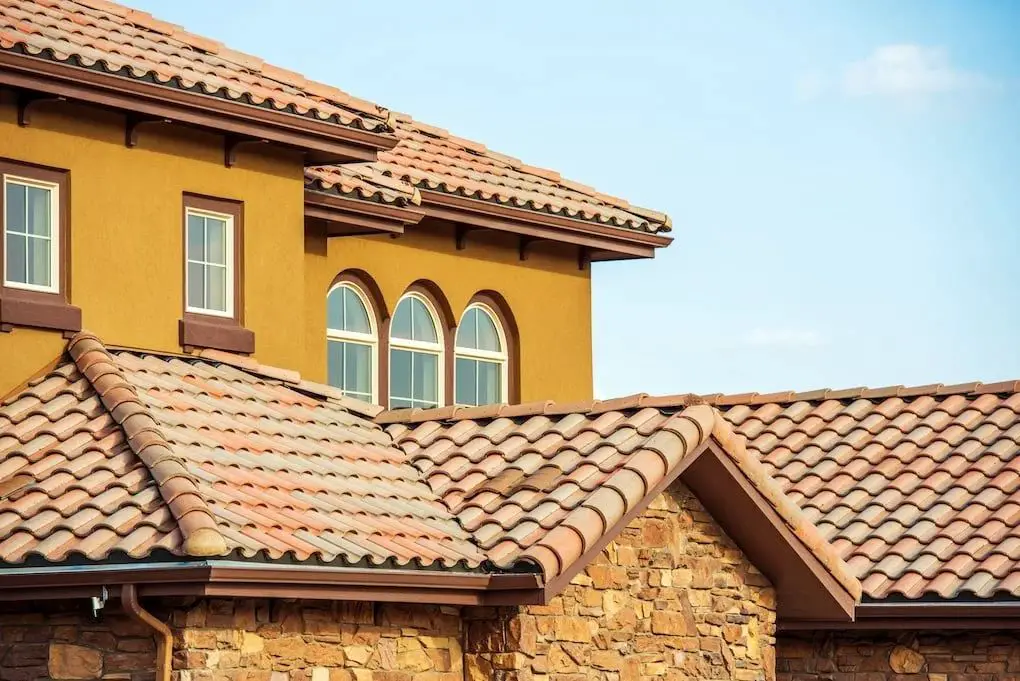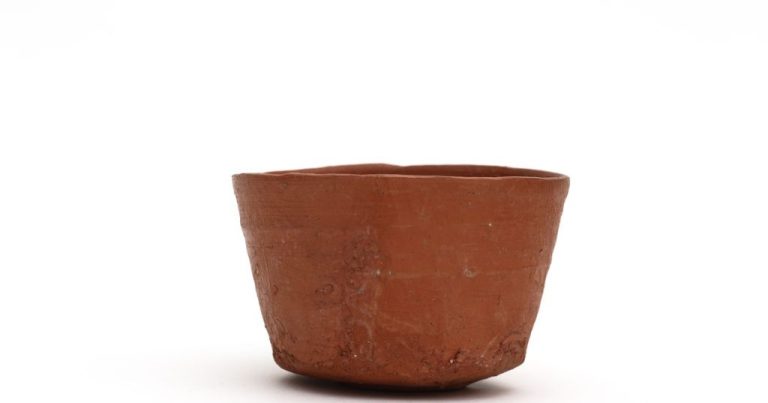Are Clay Tiles Expensive?
Clay tiles are a type of roofing material made from fired clay. They have been used for roofing for thousands of years, with evidence of early clay tiles found in China dating back to around 10,000 BC [1]. Clay tiles were also developed independently in ancient Greece and Rome [2]. They continue to be popular today thanks to their durability, aesthetic appeal, and natural properties. Clay tiles come in a variety of shapes and styles, and are used widely on residential and commercial buildings.
Types of Clay Tiles
There are three main types of clay tiles: terracotta, ceramic, and porcelain.
Terracotta tiles are made from natural clay that is baked at a high temperature. They have an earthy reddish-orange color and an uneven surface texture. Terracotta tiles are porous, so they can absorb moisture, but this also allows them to breathe. They are durable, fire-resistant, and environmentally friendly. A potential downside is that their porosity can lead to staining if not properly sealed. (Clay Tiles | PDF)
Ceramic tiles are made from refined natural clay with coloring agents added. They are denser and less porous than terracotta. Ceramic tiles come in a wide variety of colors, textures, and styles. They are durable, water-resistant, easy to clean, and stain-resistant. However, they can be prone to chipping or cracking if subjected to impact. Glazed ceramic tiles have a protective glass coating baked on top.
Porcelain tiles are made from very finely ground clay that is heated to high temperatures, making them dense and non-porous. They have excellent hardness, strength, and water resistance. Porcelain tiles are very durable and easy to maintain. The cost of porcelain tiles is higher than terracotta and ceramic. They can have a more artificial appearance than natural clay tiles. (Clay Tiles | PDF)
Cost Comparison
Clay tile roofs are generally more expensive than asphalt shingle roofs but cheaper than slate or metal roofs. According to HomeGuide, the material cost for a clay tile roof is $2.50 to $18 per square foot. This compares to $1 to $5 per square foot for asphalt shingles and $10 to $25 per square foot for slate or metal roofing.
When it comes to installation costs, clay tiles run around $8 to $9 per square foot installed. Asphalt shingles cost $3 to $7 per square foot for installation while slate/metal roofs cost $10 to $20 per square foot installed. So the total installed cost of a clay tile roof can be 2 to 3 times more than an asphalt shingle roof.

Compared to other types of flooring and roofing materials, clay tiles are generally more expensive than materials like vinyl, carpeting, wood, or asphalt shingles but less expensive than premium options like natural stone, slate, or metal roofing. Their cost is justified by their durability, aesthetics, and longevity compared to cheaper roofing materials.
Factors Affecting Cost
Several key factors impact the total cost of clay tile roofing, including:
Material
Clay tile itself is more expensive than materials like asphalt shingles. The clay used and the manufacturing process increases costs compared to other roofing materials. According to Fixr.com, clay tiles cost $800 to $1,500 per square, over 2-3 times more than asphalt shingles. https://www.fixr.com/costs/clay-tile-roof
Style
There are various styles of clay tiles like Spanish/mission tiles, French tiles, and flat/low profile tiles. More intricate styles like Spanish tiles require more clay and manual work, driving up costs compared to simpler styles. RoofGnome cites mission tiles averaging $9-12 per square foot installed. https://roofgnome.com/blog/cost/clay-tile-roof-price/
Size
Larger tiles require more clay and are heavier, making them more expensive. According to Today’s Homeowner, large mission tiles can cost $25 or more per piece. Smaller tiles are more affordable but require more pieces. https://todayshomeowner.com/roofing/cost/clay-roof-cost/
Quality
Higher quality clay with fewer impurities results in more durable tiles that justify a higher price. Imported tiles from Europe often command premium pricing as well. Roof condition and difficulty accessing the roof can also increase costs.
Shipping
Since clay tiles are heavy, shipping costs can be significant, especially for specialty tiles shipped long distances.
Labor
Installing clay tiles takes more time and expertise than other roofing, further adding to costs. Intricate tile styles require meticulous installation work. Labor accounts for up to half the total clay tile roofing cost.
Installation
Installing clay tiles is labor intensive and requires attention to detail.
While DIY installation is possible for the motivated homeowner, hiring professionals is recommended for most homes. According to www.angi.com, the key steps are:
- Prepare the roof deck
- Install roofing underlayment
- Install battens and counter-battens
- Install metal flashings
- Apply mortar
- Install the tiles
- Seal and secure tiles
- Install ridge caps
When installing clay tiles, it’s important to follow manufacturer specifications and get the roof slope, layout, and spacing right. Clay tiles are brittle and fragile. Extra care must be taken when walking on the roof and handling tiles to avoid breakage. Hiring an experienced roofer is highly recommended, as improperly installed tiles can lead to leaks, storm damage, and other issues down the road.
Maintenance
Clay tile roofs need regular maintenance to remain in good condition. The most important aspect is cleaning. Even though clay tile is durable, over time dirt, moss and algae can accumulate. It’s recommended to have the roof professionally cleaned every 3-5 years using a mild detergent solution and low-pressure power washer. Avoid using high-pressure washers as they can damage the tiles (source). The cleaning helps remove debris and prevent erosion of the tiles.
Sealing clay tiles is also recommended every 5-10 years, especially in damp climates. The sealant protects the tile from moisture and helps prevent leaks. Look for sealants specifically made for clay tiles. Re-sealing also provides an opportunity to inspect for and replace any damaged or cracked tiles.
It’s important to proactively maintain and repair clay tile roofs. Damaged or missing tiles should be replaced right away to prevent leaks. Look for replacement tiles that match the color and style. Have a roofer properly install them according to manufacturer specifications (source). With proper maintenance, a clay tile roof can last 50-100 years.
Durability
Clay tiles are known for their exceptional durability and longevity. According to Eagle Roofing, clay tile roofs can last upwards of 75 years before needing to be replaced. Other sources indicate clay tiles can last over 100 years with proper installation and maintenance. For example, Limestone Learning Center states that clay tile roofs can last a remarkable 100 years. Similarly, Huber Roofing notes that Grade 1 clay tiles have the potential to last over 100 years.
The exceptional lifespan of clay tiles is due to their durability and resistance to weathering. Properly installed clay tiles are very resistant to rain, snow, hail, and wind. Their natural clay composition makes them fireproof as well. Clay tiles tend to hold up better than other roofing materials like asphalt shingles when exposed to the elements.
The downside is that clay tiles can become more brittle and susceptible to cracking as they age. Older tiles may need to be replaced occasionally to maintain the integrity and weather-resistance of the roof. Cracked or damaged tiles should be replaced promptly by a professional roofer.
Environmental Impact
Clay roof tiles are considered an environmentally sustainable roofing material compared to other options like asphalt shingles. According to the Tile Roofing Institute, concrete and clay tiles are inherently sustainable as they can last over 100 years, meaning they don’t end up in landfills as quickly as other materials.
Clay tiles contribute to cooler attic temperatures in the summer and act as an insulator in the winter, keeping attics warmer (https://www.constructionspecifier.com/minimizing-environmental-impacts-with-clay-roofing/). This can reduce energy consumption for heating and cooling.
Clay is often extracted near manufacturing facilities, reducing the emissions associated with transportation (https://www.lifestiles.co.uk/clay-tile-slate-sustainability/). At end of life, clay tiles can also be crushed and recycled into drainage aggregates or other building materials.
Aesthetics
Clay tiles offer a unique and charming aesthetic that enhances a home’s architecture and overall curb appeal. The varied shapes, patterns, textures and colors available provide extensive design flexibility to match any architectural style. According to Ecomateriales CR, clay tiles have an enduring aesthetic appeal dating back centuries. The handcrafted, rustic look and Old World charm of clay is difficult to replicate with other roofing materials.
There are diverse styles of clay tiles to choose from including flat, S-shaped, barrel and interlocking patterns. Clay tiles are available in earthy reds, warm browns, terra cotta, and other natural hues that complement many color schemes. The textured appearance adds visual depth and dimension to the roof. Overall, clay tiles offer a high-end, upscale look that enhances a home’s curb appeal and resale value. With the range of options, clay tiles can elevate architecture from traditional to modern.
Conclusion
So, are clay tiles an expensive roofing material? Overall, clay tiles tend to be more expensive upfront compared to asphalt, metal, and composite shingles. However, they make up for their higher initial cost over time thanks to their extreme durability and lifespan of over 100 years. While more affordable synthetic options may only last 20-30 years, you’ll get your money’s worth from clay tiles in the long run.
Clay tiles are best suited for homes where a beautiful, natural roof is desired. Their old world charm and variety of shapes/colors make them a top choice for historic homes, villas, and upscale estates. Those seeking minimal maintenance will also appreciate their longevity and resistance to weather damage. However, the weight of clay may require roof reinforcement.
In the end, clay tiles are an investment that pays off over decades of beauty and protection. While more affordable at first, alternatives like asphalt and metal may need frequent repairs or replacement. For those who can afford the initial cost, clay tiles are a classic roofing material that will withstand the test of time.



